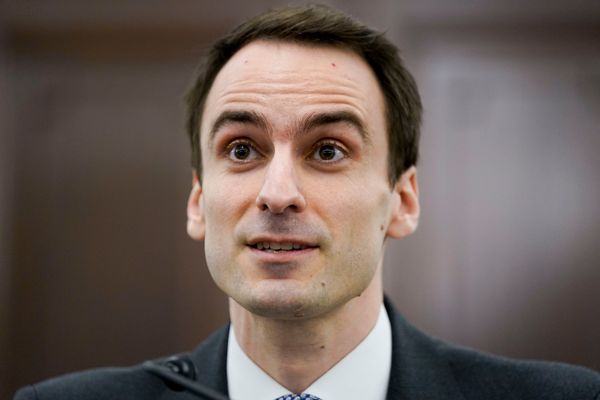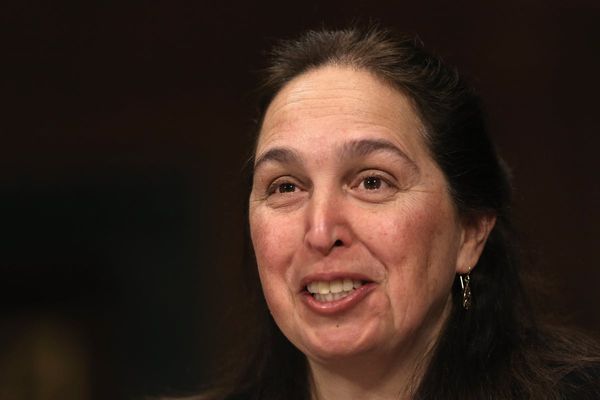
The use of artificial intelligence in breast cancer screening increases the chance of the disease being detected, researchers have found, in what they say is the first real-world test of the approach.
Numerous studies have suggested AI could help medical professionals spot cancer, whether it is identifying abnormal growths in CT scans or signs of breast cancer in mammograms.
However, many studies are retrospective – meaning AI is not involved at the outset – while trials taking the opposite approach often have small sample sizes. Important, larger studies do not necessarily reflect real-world use.
Now researchers say they have tested AI in a nationwide screening programme for the first time, revealing it offers benefits in a real-world setting.
Prof Alexander Katalinic, a co-author of the study from the University of Lübeck in Germany, said: “We could improve the detection rate without increasing the harm for the women taking part in breast cancer screening,” adding the approach could also reduce the workload of radiologists.
Katalinic and his colleagues analysed data from 461,818 women in Germany who underwent breast cancer screening between July 2021 and February 2023 as part of a national programme targeting asymptomatic women aged 50–69.
All of the women had their scans independently examined by two radiologists. However, for 260,739 of the women, at least one of the experts used an AI tool to support them.
The AI tool not only visibly labels scans it deems unsuspicious as “normal”, but it issues a “safety net” alert when a scan it rates as suspicious has been judged unsuspicious by the radiologist. In such a case the tool also highlights the area of the scan it suggests merits scrutiny.
Overall, 2,881 of the women in the study, which is published in the journal Nature Medicine, were diagnosed with breast cancer. The detection rate was 6.7% higher in the AI group. However, after taking into account factors such as age of the women and the radiologists involved, the researchers found this difference increased, with the rate 17.6% higher for the AI group at 6.70 per 1,000 women compared with 5.70 per 1,000 women for the standard group. In other words, one additional case of cancer was spotted per 1,000 women screened when AI was used.
Crucially, the team said the rate at which women were recalled for further investigation as a result of a suspicious scan was approximately the same.
“In our study, we had a higher detection rate without having a higher rate of false positives,” said Katalinic. “This is a better result, with the same harm.”
The team said the tool’s “safety net” was triggered 3,959 times in the AI group, and led to 204 breast cancer diagnoses. By contrast, 20 breast cancer diagnoses in the AI group would have been missed had clinicians not examined the scans deemed “normal” by AI.
Stefan Bunk, another co-author and a co-founder of Vara, the company that built the AI tool, said the technology increased the speed at which radiologists examined scans flagged as “normal”, adding calculations showed even if these scans were not reviewed by experts the overall breast cancer detection rate would be higher and the recall rate lower than without the tool. That, he said, meant fewer false positives for women and a reduced workload for radiologists.
Stephen Duffy, emeritus professor of cancer screening at Queen Mary University of London, who was not involved in the work, said the results were credible and impressive.
“Here in the UK, there is specific interest in whether use of AI plus a single radiologist can safely replace reading by two radiologists. The sooner this is researched definitively the better,” he said.
Dr Kristina Lång, of Lund University, said the study added to the growing body of evidence supporting the potential benefits of incorporating AI into mammography screening. But she added that the large increase in detected in situ cancers raised concerns, as these cancers are more likely to be slow growing and may contribute to the overdiagnosis burden of screening.
“Long-term follow-up is essential to fully understand the clinical implications of integrating AI into mammography screening,” she said. “The results are encouraging, but it is essential to ensure that we implement a method capable of detecting clinically relevant cancers at an early stage, where early detection can meaningfully improve patient outcomes.”
Dr Katharine Halliday, the president of the Royal College of Radiologists, said the organisation’s most recent census showed a 29% shortfall of radiologists in the NHS.
“Any tools that can boost our accuracy and productivity are welcome. But, while the potential benefits are significant, so are the potential risks,” she said. “It is vital that deployment of AI into the NHS is done carefully, with expert oversight.”







